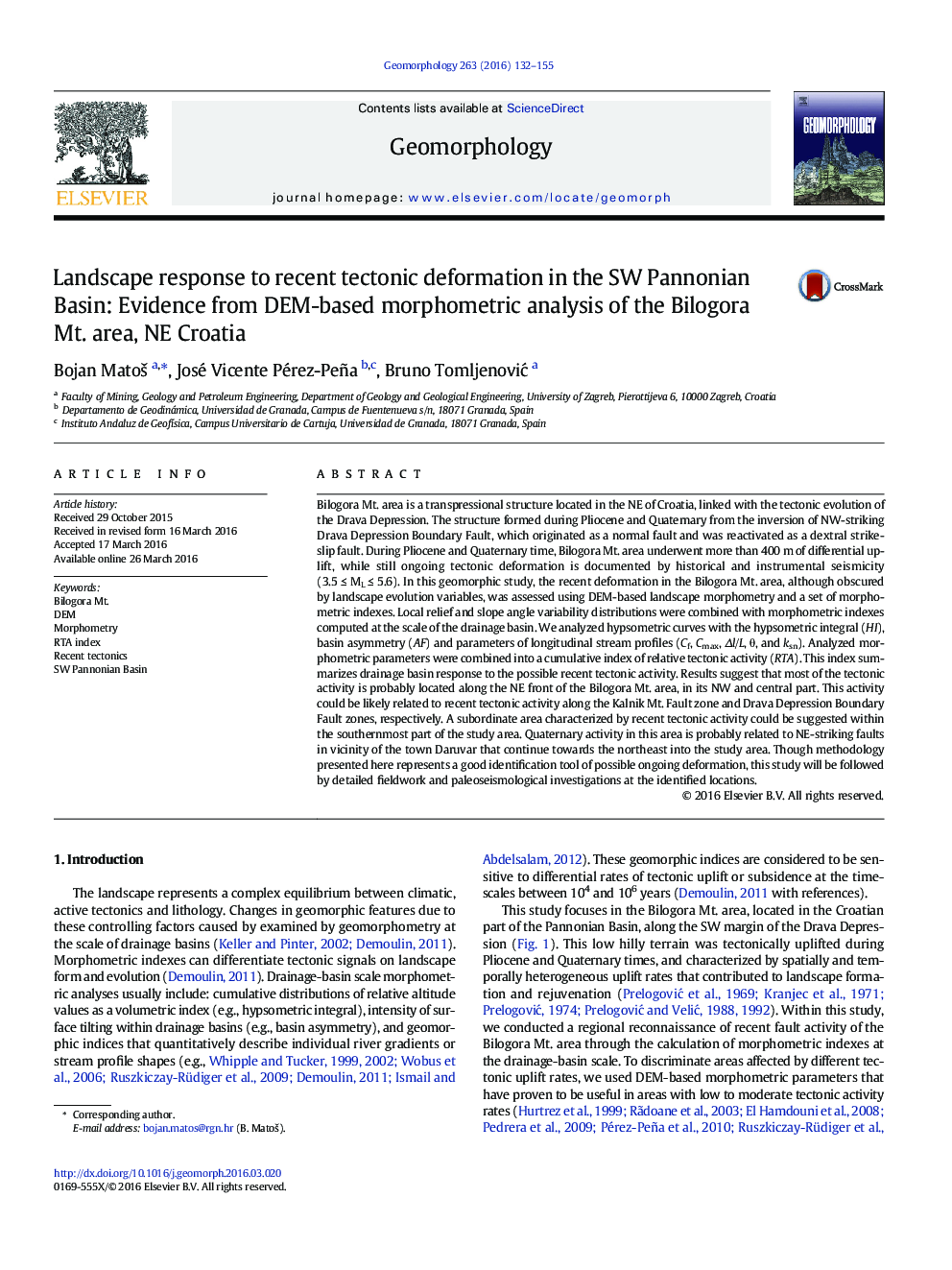| Article ID | Journal | Published Year | Pages | File Type |
|---|---|---|---|---|
| 4684036 | Geomorphology | 2016 | 24 Pages |
•Recent tectonics in SW Pannonian Basin are identified in the Bilogora Mt. area.•Ongoing deformation is accommodated by Pliocene and Quaternary active faults.•Kalnik Mt. and Drava Depression Boundary Fault zones are recent active structures.•Differential tectonic uplift is manifested as landscape and stream rejuvenation.•Cumulative geomorphic index of Relative tectonic activity (RTA) is proposed.
Bilogora Mt. area is a transpressional structure located in the NE of Croatia, linked with the tectonic evolution of the Drava Depression. The structure formed during Pliocene and Quaternary from the inversion of NW-striking Drava Depression Boundary Fault, which originated as a normal fault and was reactivated as a dextral strike-slip fault. During Pliocene and Quaternary time, Bilogora Mt. area underwent more than 400 m of differential uplift, while still ongoing tectonic deformation is documented by historical and instrumental seismicity (3.5 ≤ ML ≤ 5.6). In this geomorphic study, the recent deformation in the Bilogora Mt. area, although obscured by landscape evolution variables, was assessed using DEM-based landscape morphometry and a set of morphometric indexes. Local relief and slope angle variability distributions were combined with morphometric indexes computed at the scale of the drainage basin. We analyzed hypsometric curves with the hypsometric integral (HI), basin asymmetry (AF) and parameters of longitudinal stream profiles (Cf, Cmax, Δl/L, θ, and ksn). Analyzed morphometric parameters were combined into a cumulative index of relative tectonic activity (RTA). This index summarizes drainage basin response to the possible recent tectonic activity. Results suggest that most of the tectonic activity is probably located along the NE front of the Bilogora Mt. area, in its NW and central part. This activity could be likely related to recent tectonic activity along the Kalnik Mt. Fault zone and Drava Depression Boundary Fault zones, respectively. A subordinate area characterized by recent tectonic activity could be suggested within the southernmost part of the study area. Quaternary activity in this area is probably related to NE-striking faults in vicinity of the town Daruvar that continue towards the northeast into the study area. Though methodology presented here represents a good identification tool of possible ongoing deformation, this study will be followed by detailed fieldwork and paleoseismological investigations at the identified locations.
